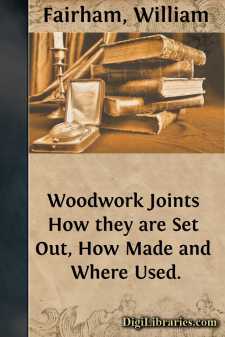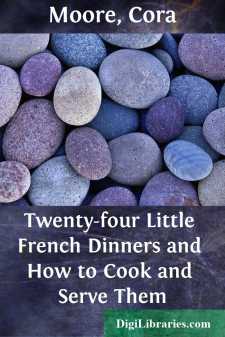Categories
- Antiques & Collectibles 13
- Architecture 36
- Art 48
- Bibles 22
- Biography & Autobiography 813
- Body, Mind & Spirit 142
- Business & Economics 28
- Children's Books 15
- Children's Fiction 12
- Computers 4
- Cooking 94
- Crafts & Hobbies 4
- Drama 346
- Education 46
- Family & Relationships 57
- Fiction 11828
- Games 19
- Gardening 17
- Health & Fitness 34
- History 1377
- House & Home 1
- Humor 147
- Juvenile Fiction 1873
- Juvenile Nonfiction 202
- Language Arts & Disciplines 88
- Law 16
- Literary Collections 686
- Literary Criticism 179
- Mathematics 13
- Medical 41
- Music 40
- Nature 179
- Non-Classifiable 1768
- Performing Arts 7
- Periodicals 1453
- Philosophy 64
- Photography 2
- Poetry 896
- Political Science 203
- Psychology 42
- Reference 154
- Religion 513
- Science 126
- Self-Help 84
- Social Science 81
- Sports & Recreation 34
- Study Aids 3
- Technology & Engineering 59
- Transportation 23
- Travel 463
- True Crime 29
A Course In Wood Turning
by: Archie S. Milton
Categories:
Description:
Excerpt
CHAPTER I
INTRODUCTORY
Wood turning has had a definite place in the commercial world for a great many years. It is used in various forms in making furniture and furniture parts, building trim, tool parts, toys, athletic paraphernalia and many other useful and beautiful articles in common use.
When properly taught in the schools it is one of the most valuable types of instruction. It appeals to pupils more than any other type of manual work, as it embodies both the play and work elements. It is very interesting and fascinating and, in the hands of a skilled instructor, is readily correlated with other work.
Wood turning gives a pupil preliminary experience necessary in pattern making and machine shop work. It brings into play the scientific element by demonstrating the laws governing revolving bodies. In bringing the chisel into contact with the revolving surface, the mathematical principle of the "point of tangency" is illustrated. Excellent tool technique is developed in wood turning as on the exactness of every movement depends the success of the operator, and any slight variation will spoil a piece of work. This brings in a very close correlation of the mental and motor activities and also gives the student an opportunity for observing and thinking while at work. When his tool makes a "run" he must determine the reason and figure out why a certain result is obtained when the chisel is held in a given position. Certain cuts must be fully mastered, and it takes a good deal of experience and absolute confidence in one's self in manipulating the tools before it is possible to attempt skilful work. If scraping is allowed the educational value of the work is lost.
In wood turning a vast field for design and modeling is opened, and art and architecture can be correlated. The pupil will see for himself the need of variety in curves and must use his judgment in determining curves that are so harmonious and pleasing that they will blend together. If properly taught the beauty in the orders of architecture can be brought out in the making of the bead, fillet, scotia, cove, etc.
A feeling of importance is excited in a boy when he sees his hands shaping materials into objects of pleasing form. Wood turning properly taught awakens the aesthetic sense and creates a desire for the beautiful. The boy or man who has learned to make graceful curves and clean-cut fillets and beads will never be satisfied with clumsy effects which are characteristic in cheap commercial work, made only to sell.
Success in turning depends on the following:
1. Care of lathe, tools, selection of materials.
2. Study of the scientific elements of--
a. Revolving bodies.
b. Points of tangency.
c. Study of results by reasoning and observing.
3. Development of technique and exactness.
4. Correlation of mental and motor activities.
THE LATHE
The sizes of turning lathes are given as 10", 12", etc. These figures denote the diameter, or size, of the largest piece of work that can be turned on them. The measurement is taken from the center point of the live center to the bed of the lathe (usually 5" or 6") and is one-half the diameter of the entire circle. The length of a lathe is determined by the length of a piece of work that can be turned. This measurement is taken from the points of the live and dead centers when the tail stock is drawn back the full extent of the lathe bed. Fig. 1 shows a turning lathe with sixteen principal parts named. The student should learn the names of these parts and familiarize himself with the particular function of each.
CARE OF THE LATHE
The lathe should be oiled every day before starting. At the end of the period the lathe should be brushed clean of all chips and shavings, after which it should be rubbed off with a piece of waste or cloth to remove all surplus oil. All tools should be wiped clean and put in their proper places. If a student finds that his lathe is not running as it should, he should first call the attention of the instructor to that fact before attempting to adjust it; and then only such adjustments should be made as the instructor directs.
SPEED OF THE LATHE
The speed of the lathe should range from 2400 to 3000 revolutions per minute when the belt is on the smallest step of the cone pulley. At this speed stock up to 3" in diameter can be turned with safety. Stock from 3" to 6" in diameter should be turned on the second or third step, and all stock over 6" on the last step. The speed at which a lathe should run depends entirely upon the nature of the work to be done and the kind of material used. Pieces that cannot be centered accurately and all glued-up work with rough corners should be run slowly until all corners are taken off and the stock runs true. At high speed the centrificial force on such pieces is very great, causing the lathe to vibrate, and there is a possibility of the piece being thrown from the lathe thus endangering the worker as well as those around him. After the stock is running true the speed may be increased.
Fig. 1. - Wood Turning Lathe
TO FIGURE THE DIAMETER OF PULLEYS
Suppose a motor runs 1500 R.P.M....












